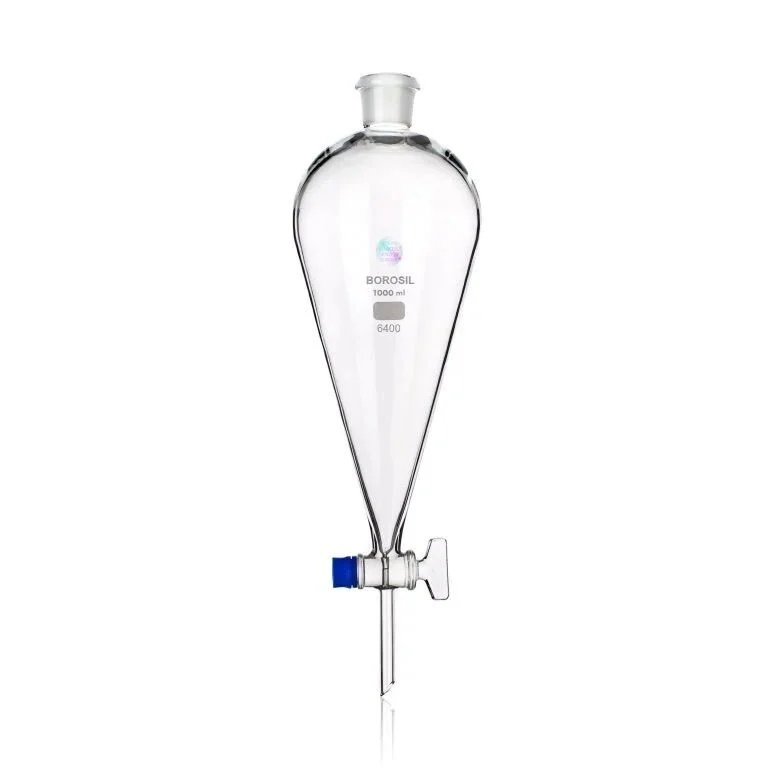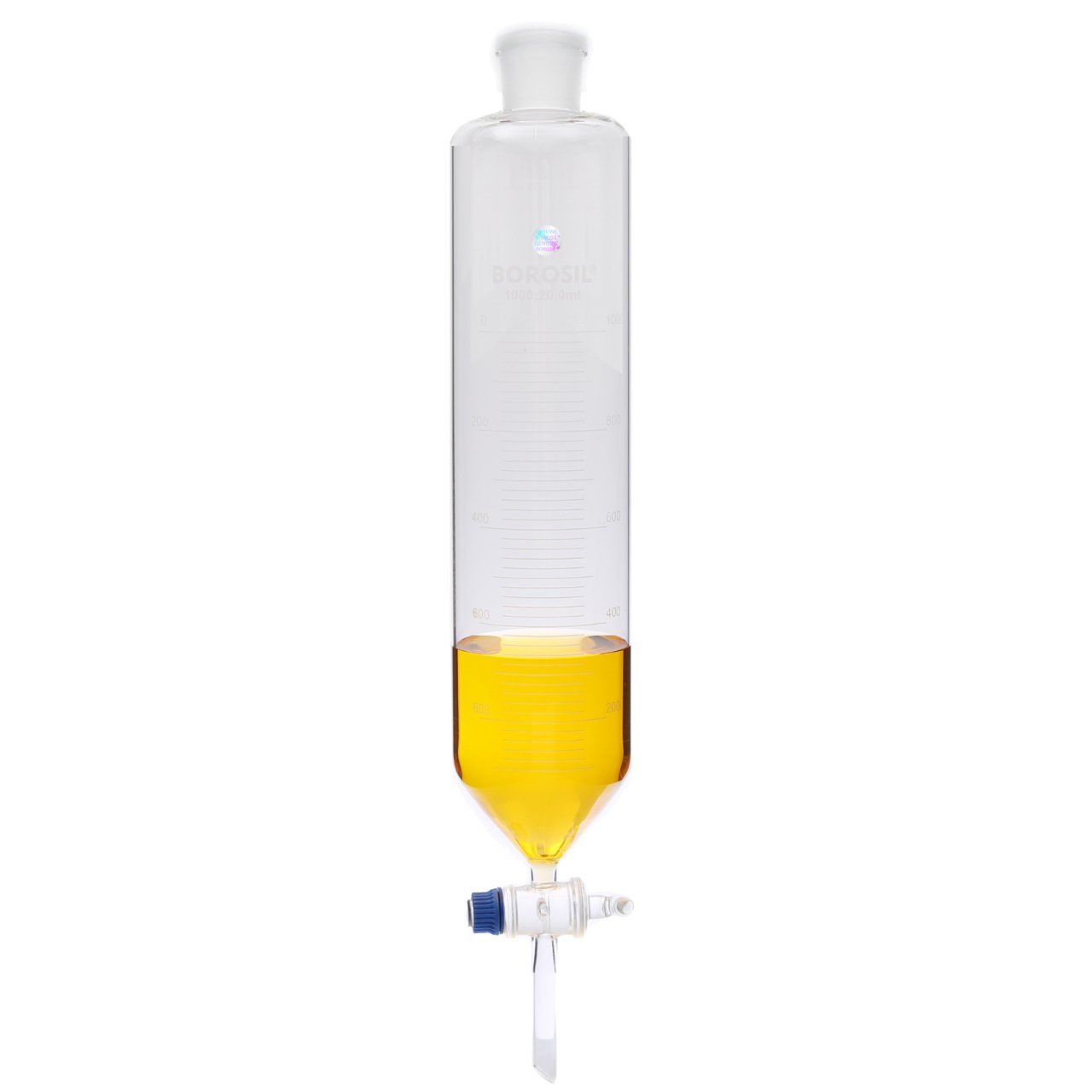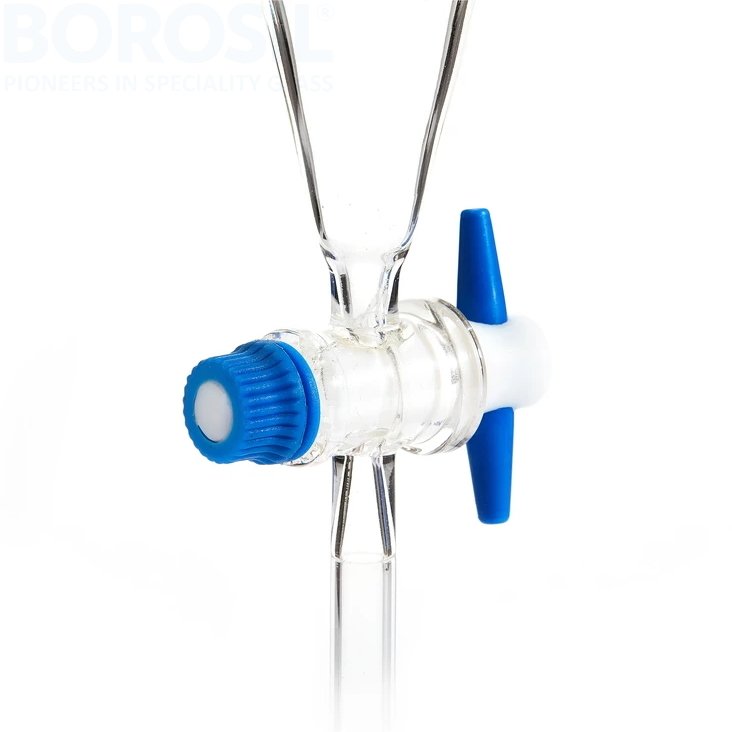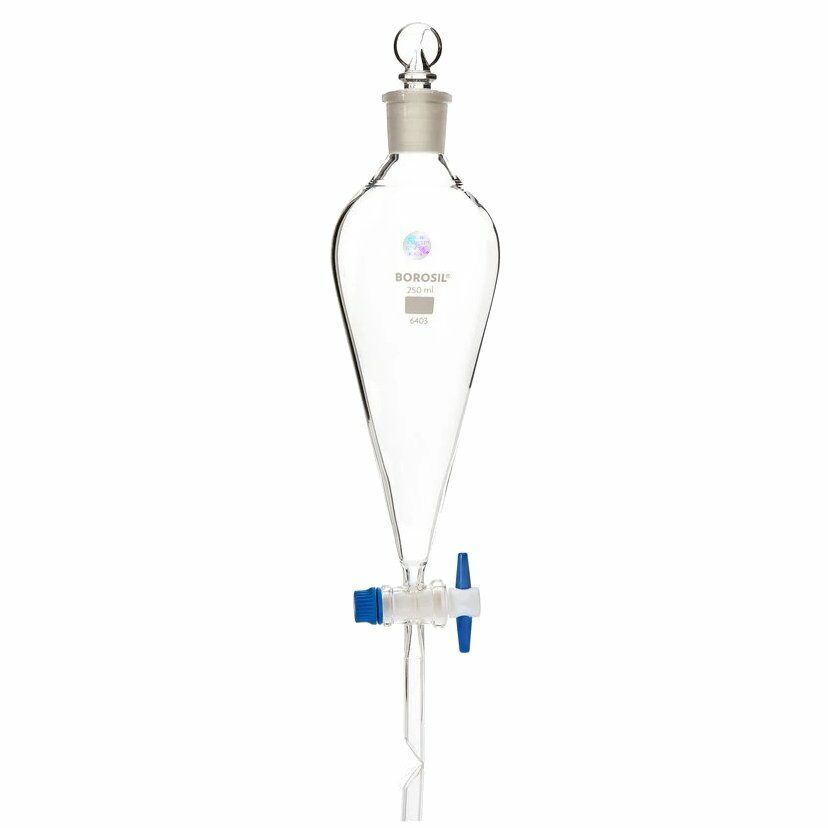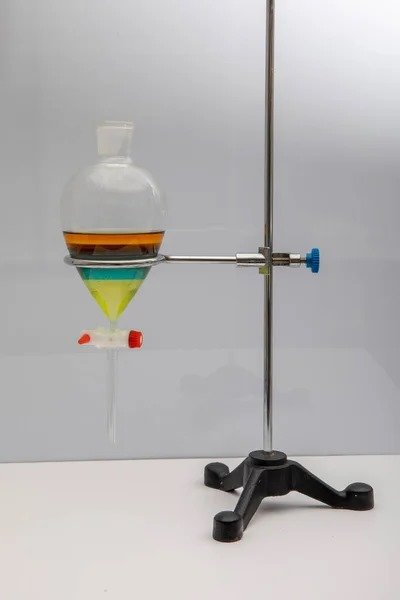Purification with a Separating Funnel | Use of Separating Funnels for Precise Analyses
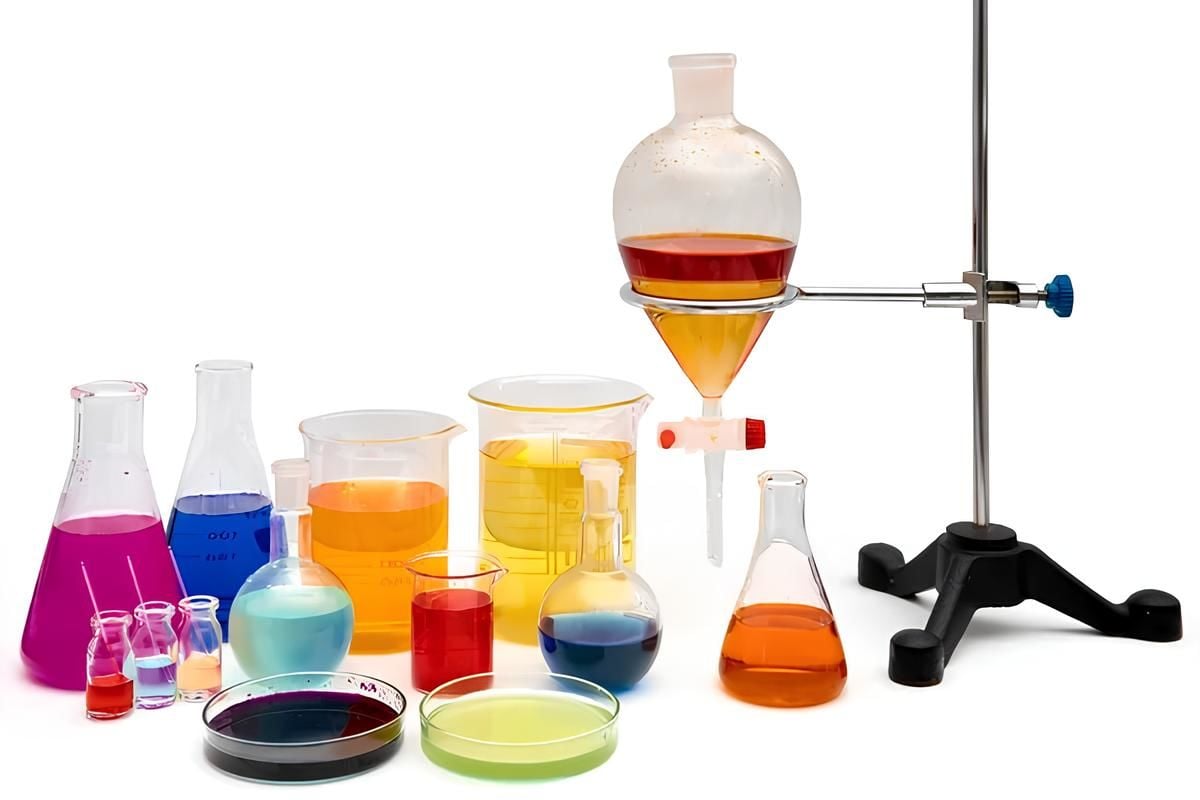
It is more intriguing than it might initially appear. This essential piece of laboratory equipment usually made from glass and shaped like a cone or pear, plays a pivotal role in chemistry labs. They are frequently preferred in filtration experiments.
It's all about the art of precision. A separation funnel primarily divides two liquids that don't mix - oil and water. At the narrow bottom of this curious apparatus is a stopcock, a kind of tap that allows you to control the release of these liquids based on their density differences. This capability is not just useful but crucial in experiments where precise separation can make or break the results.
When selecting the type of funnel to be used, it is important to know which material will be suitable enough to withstand the weight of the transferred substance and will not react with it. Therefore, in laboratory sample filtration processes, glass funnels are used; for transferring diesel fuel, stainless steel funnels are preferred; and in the kitchen, plastic funnels are typically used.
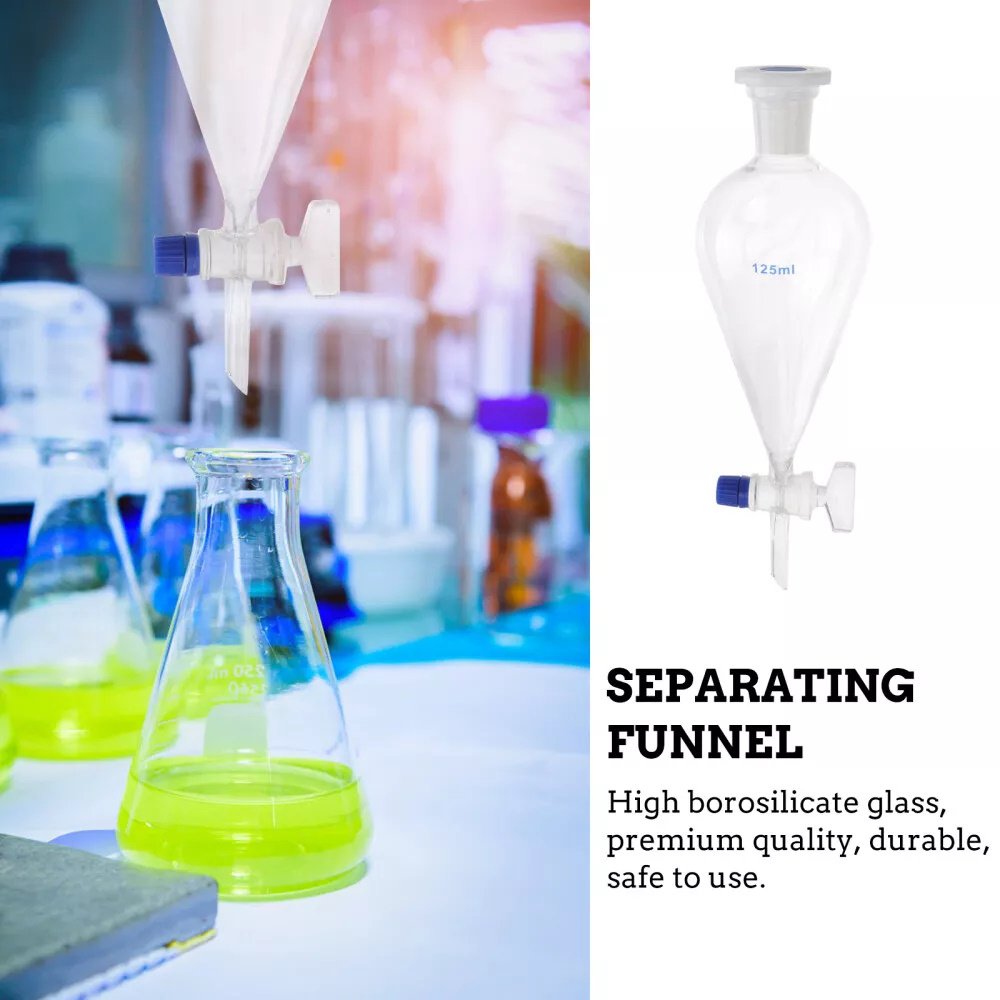
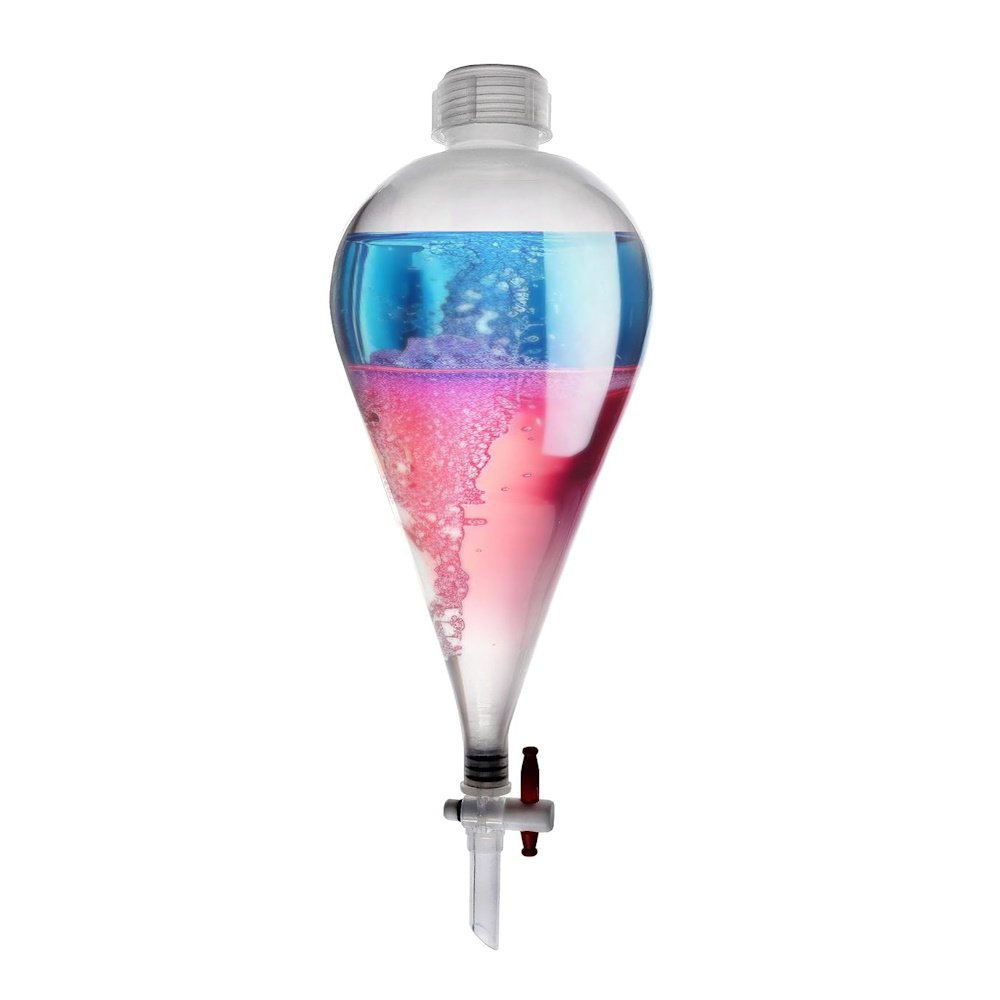
The pear-shaped funnel is most popular because its design minimises the surface area at the bottom, which helps in reducing the mixing of layers during separation. It's ideal for precise operations, especially when handling smaller quantities of liquids.
On the other hand, the cylindrical funnel offers excellent visibility of the liquid layers, which proves perfect advantage when the density difference between the liquids is slight. This visibility aids in preventing premature layer release, ensuring a more accurate separation.
The separation funnel is used in various industrial applications, for example, in separating oil and water, water & gasoline, cosmetics, pharmaceuticals, and other food products.
Also known as a glass filter funnel, these funnels are cylindrical, conical, and pear-shaped, with a cap and a short neck. The conical separating funnel is used in liquid-liquid extractions to separate components of a mixture between two immiscible solvent phases of different densities, and it is equipped with a tap for even pouring of liquids. It is also used in inorganic and organic chemistry for adding reagents during distillation or reaction processes.
Choose Borox for its low cost and good quality seperatory funnels with a wide range of lab equipments.

